ATTENTION! All pictures are presented in high resolution. To see Hi-Res images – just TWICE click on any picture. In other words, click small picture – opens the BIG picture. Click BIG picture – opens VERY BIG picture.
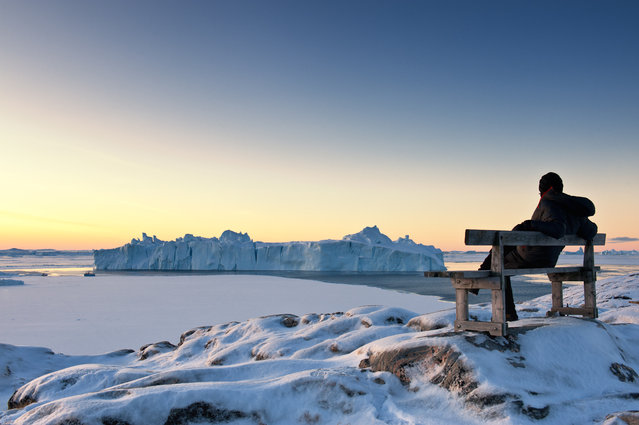
“Arctic dawn”. While gazing at colossal icebergs, I greeted the Artcic Circle mid-winter dawn.(10:17a.m.). Location: Ilulissat, Greenland. (Photo and caption by Takaki Watanabe/National Geographic Traveler Photo Contest)
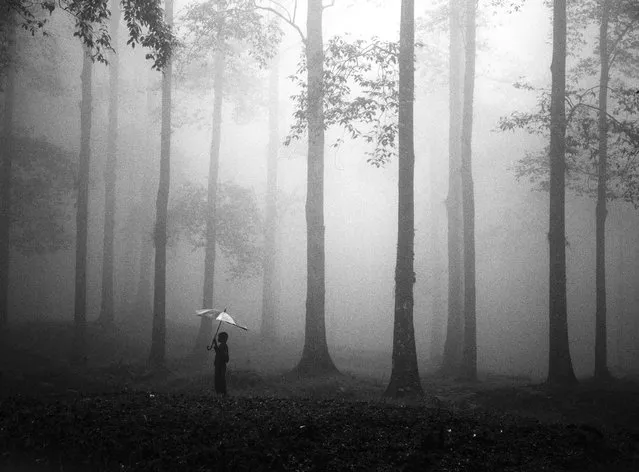
“After The Rain”. A beautiful misty forest after the rain. Taken in Gunung Halimun Salak National Park, West Java Indonesia, January 2012. (Photo and caption by Hengki Lee/National Geographic Traveler Photo Contest)
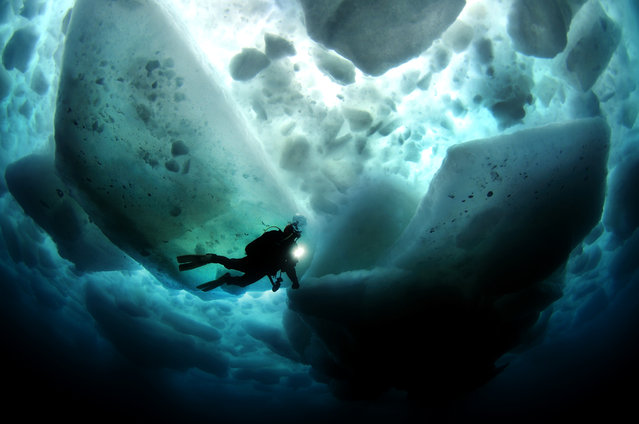
“Beneath The Ice”. A magical moment as tons of sea ice floats above while we explored the world beneath the waves. Location: Shiretoko, Japan. (Photo and caption by Aaron Wong/National Geographic Traveler Photo Contest)
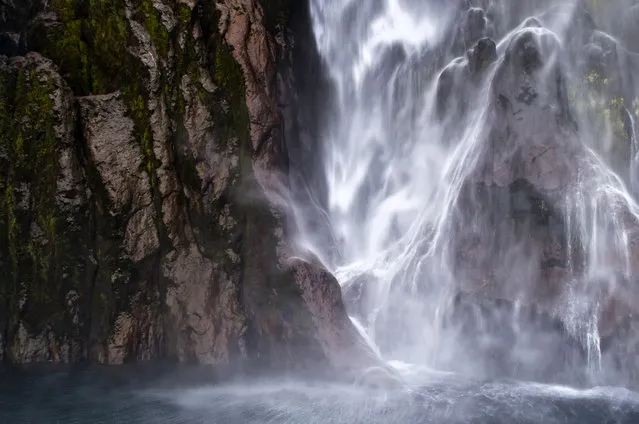
“The Lady”. A close view of the Stirling Falls. It's just one of the stunning falls edging the fiord of Milford Sound – New Zealand. At the right side the rocks look like a gentle lady clothed by a white shawl. (Photo and caption by Roberto Bettacchi/National Geographic Traveler Photo Contest)
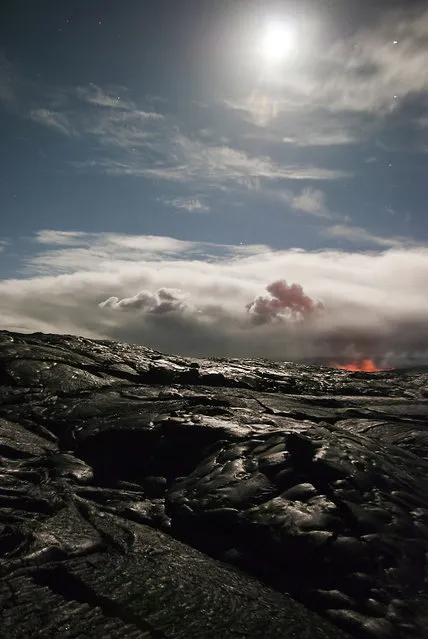
“Moon & Kilauea Lava Glow”. This photo was shot, with an eight second exposure, by complete moonlight! We hiked across this lava field for 1.5hrs through sporadic rain showers and fog; but did not make it to see the lava flow up close. On our way back the clouds parted an almost full moon appeared to light this scene. I still can’t believe how much this photo looks like daylight! Location: Hawai'i Volcanoes National Park, on the Big Island. (Photo and caption by Peaches Wallin/National Geographic Traveler Photo Contest)
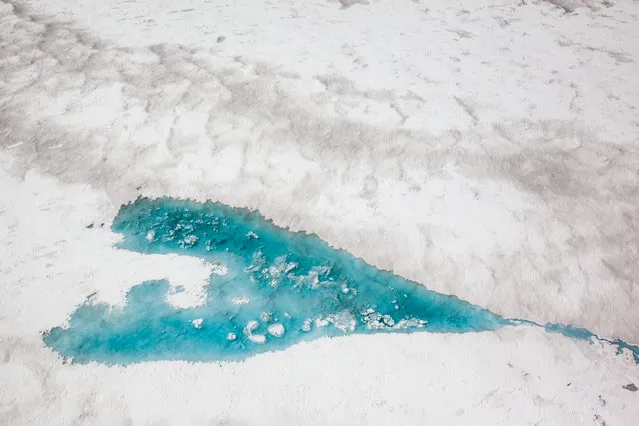
“Glacier Heart”. This heart-shaped melt lake on a glacier caught my eye on a flight approaching Mount McKinley (Denali) within the Alaska Range. (Photo and caption by Marcus Haid/National Geographic Traveler Photo Contest)
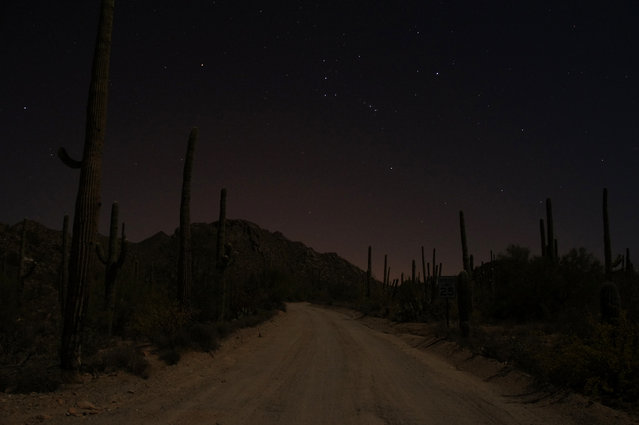
“Moonlit Hohokam Road, Saguaro National Park West, Arizona”. After a full day's hike around Saguaro, I found myself returning in the darkness, having once again miscalculated my daylight allowance. I stepped carefully along the darkening trail, scanning the ground for silhouettes of rattlesnakes and spiny chollas. Luckily, this was a full-moon night, and my path was soon illuminated with a blue-grey haze, criss-crossed with shadows of tall cactus sentinels. I finished my hike by moonlight, and stopped to take this picture on the drive back to my campsite. (Photo and caption by Matt Relkin/National Geographic Traveler Photo Contest)
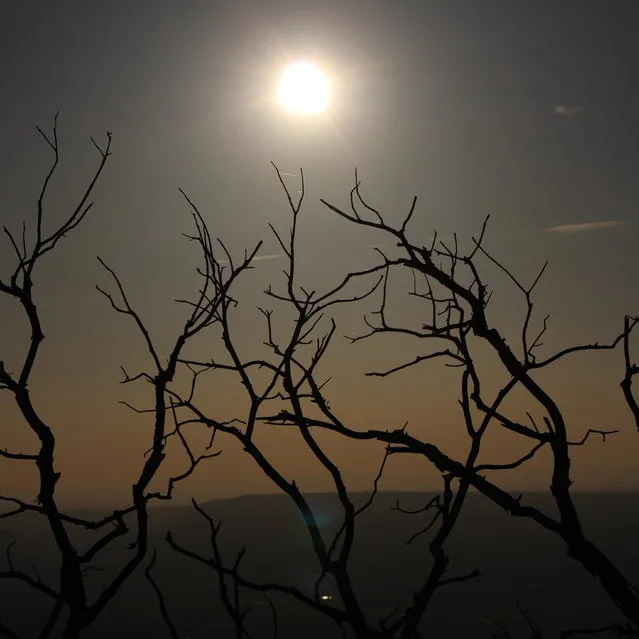
“Post Eclipse Lighting”. Taken in the minutes after the eclipse on May 20, 2012. Location: Mesa Verde National Park (highest point in park). (Photo and caption by Elizabeth Blair/National Geographic Traveler Photo Contest)
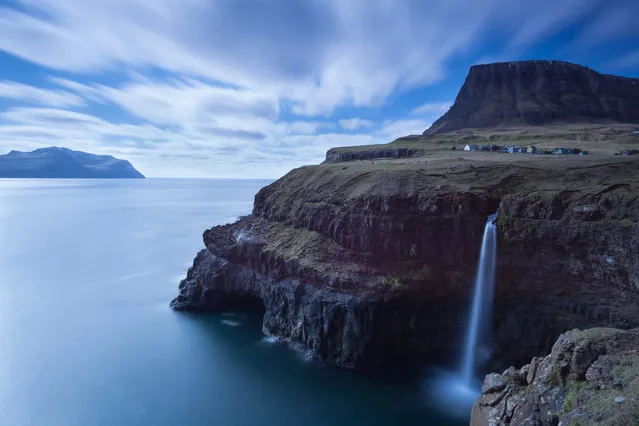
“Merit Winner: The Village of Gásadalur”. The village of Gásadalur and the island of Mykines in the background. Until a tunnel was built in 2004, the 16 residents living in Gásadalur had to take a strenuous hike or horseback over the steep 400 meter mountain in order to make it to the other villages. It was a rare sunny day in the Faroe Islands and I had to wait until the clouds rolled in to provide some softer light. I decided to go with a long exposure (1 minute 10 seconds) to illustrate the force of the wind and a serene sea among the isolated islands. (Photo and caption by Ken Bower/National Geographic Traveler Photo Contest)
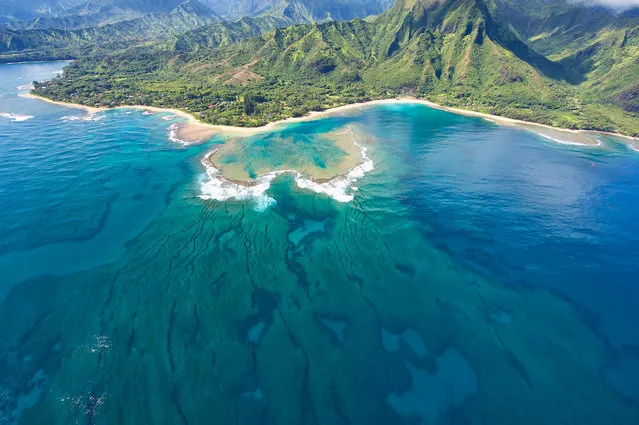
“Tunnels Beach”. The protective coral reef that makes Tunnels Beach a great place for beginners to snorkel & scuba dive can be seen from the air. The beach is located on the island of Kaua'i, Hawai'i. (Photo and caption by Scott Chapman/National Geographic Traveler Photo Contest)
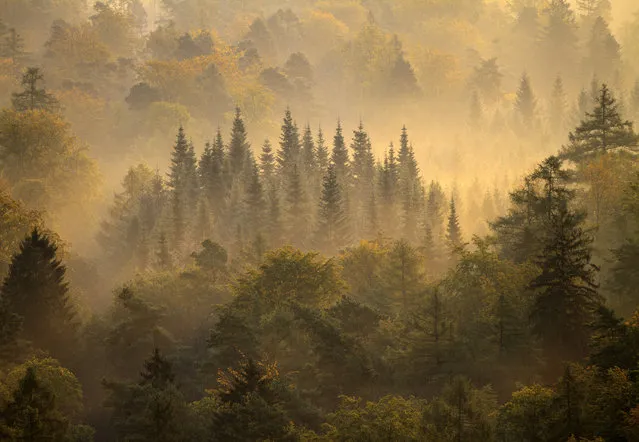
“Fog and Sunrise”. Canon EOS 7D F/2.8 1/400 sec ISO-100 200mm. Photo is taken the 25/09/2011 at 07:46am in ,Vorderweidenthal a municipality in Südliche Weinstraße district, in Rhineland-Palatinate, Western Germany. (Photo and caption by Sausse David/National Geographic Traveler Photo Contest)
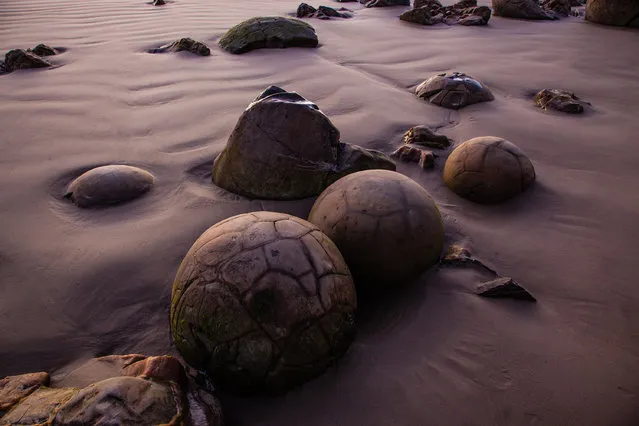
“Giant Marbles”. Like ancient giant marbles the Moeraki Boulders are strewn across Koekohe Beach on New Zealand's South Island. The light of sunrise casts an otherwordly hue on these rock formations. (Photo and caption by Marcus Haid/National Geographic Traveler Photo Contest)
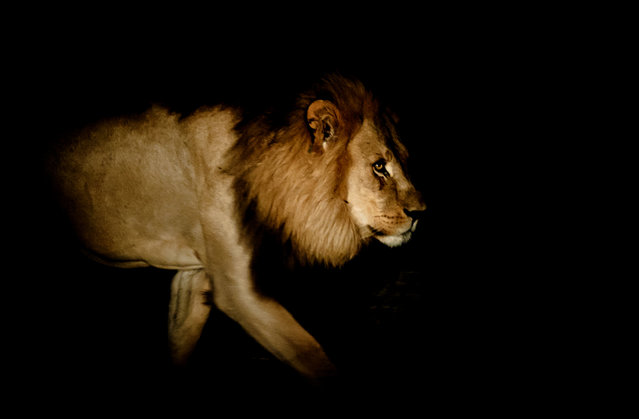
“From the Darkness”. Nothing seems more powerful or stunning than a lion emerging from the darkness. This lion barely acknowledged our presence, but we held our breath as he strode quietly through the light of our torch. Location: Moremi Game Reserve, Okavango Delta, Botswana. (Photo and caption by Amanda Stronza/National Geographic Traveler Photo Contest)
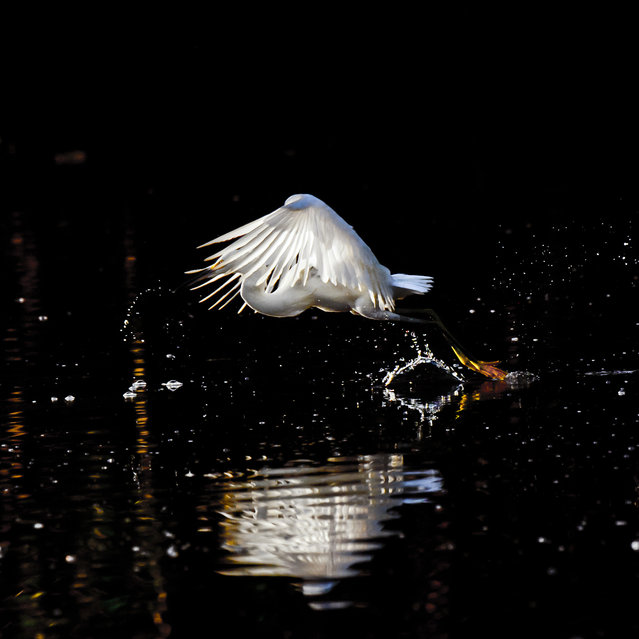
“First Flight”. I captured this Snowy Egret at first light in a remote pond in the Everglades. Location: Evergaldes Nationl Park. (Photo and caption by Sandy Flint/National Geographic Traveler Photo Contest)
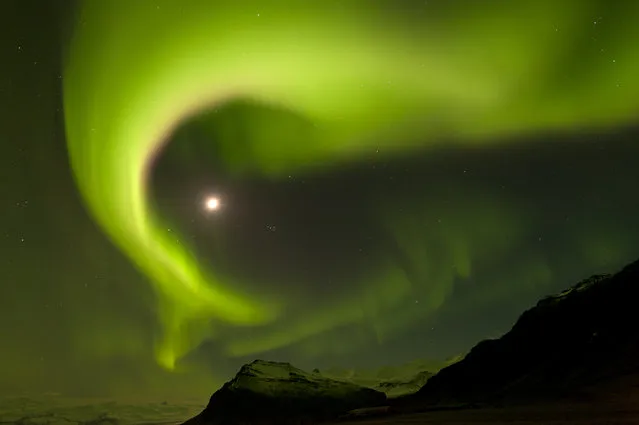
“Fairytale”. I actually didn't expect I would be photographing the Aurora Borealis during my trip to Iceland. I've hoped to see a glimpse of the Northern Lights once in my life. While being on the trip the odds became more and more favorable. So I decided to stay up late to watch the sky all night hoping there would be some activity. I already set up the photographic gear just in case. All of a sudden I saw some activity and it started to become very big! The feeling I got was like I was in a fairytale, so unreal and magical was this moment to me. I even forgot to take photographs for a moment. Location: Höfn, Iceland. (Photo and caption by Andrew George/National Geographic Traveler Photo Contest)
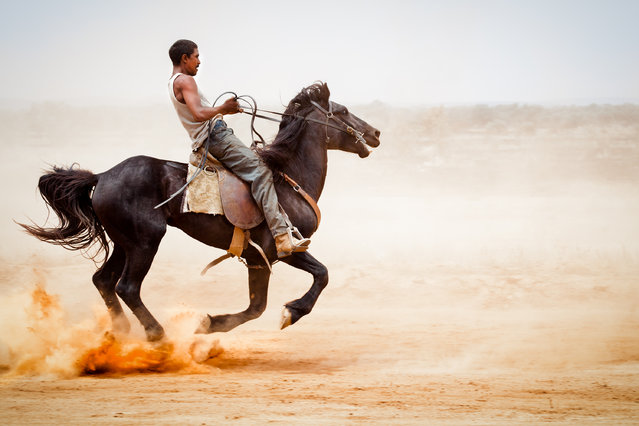
“The Ride”. Indigenous Australians in the Outback have a proud tradition of expert Horsemanship. Every Year, around Sept, there is a series of Race Weekends held at various remote Homelands or Communities attracting Riders and Horses from all over Central Australia. Two types of horses compete. Stock Horses, of which many are caught as wild Brumbies weeks before and broken in for the event, and Race Horses. The race horses are purchased in Alice Springs. This image captures a young rider pulling up a Thoroughbred after a win at the Ltyentye Apurte (Santa Teresa) Bush races 100km East of Alice Springs. (Photo and caption by Peter Carroll/National Geographic Traveler Photo Contest)
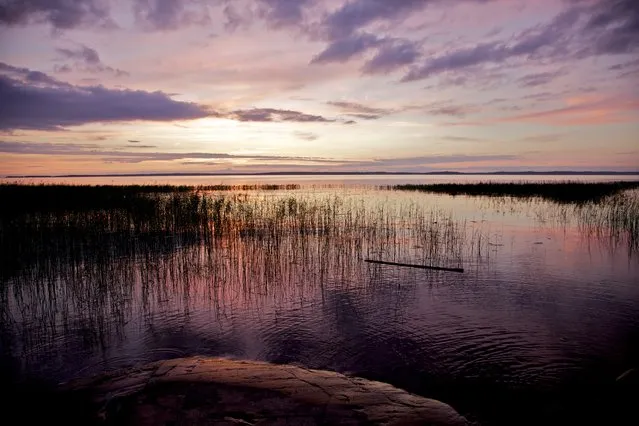
“Vänern Sunset”. I know sunsets are a cliche, but I love this picture, which is not color corrected. The colors that night was magical stretching from deep purple to pink, reflected in the lake of Vänern, the third larges lake in Europe. Location: Mariestad, Vänern, Sweden. (Photo and caption by Harald Sandø/National Geographic Traveler Photo Contest)
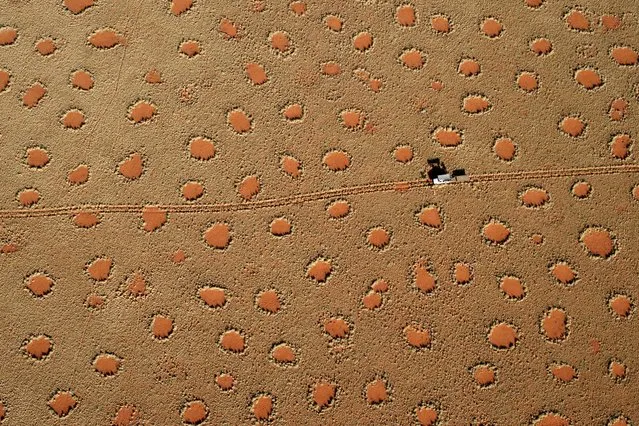
“Fairy Tale Circles from above”. What a magic moment on our honeymoon trip – sunrise in the namibian desert and all these fairy tale circles from a ballon's perspective. Wow! Location: Namib desert, Namibia. (Photo and caption by Bruno Kaeslin-Kuemmelberg/National Geographic Traveler Photo Contest)
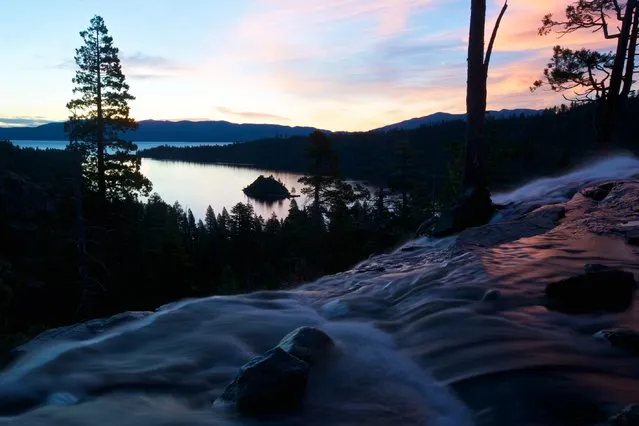
“First rays for the day”. The serenity of the lake below versus the roaring waterfalls above. Location: Lake Tahoe, California. (Photo and caption by Ju Shen Lee/National Geographic Traveler Photo Contest)
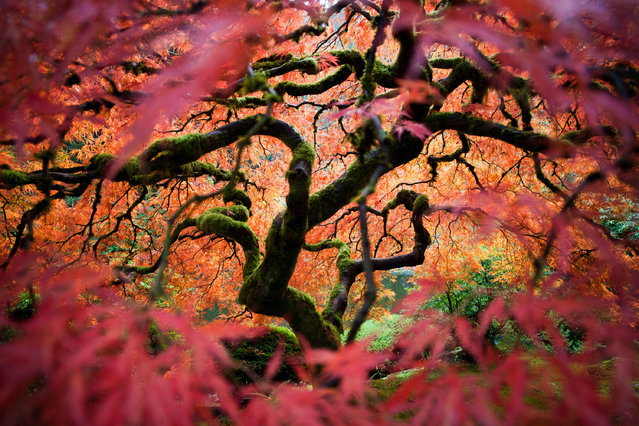
“Merit Winner: Looking into Another World”. This is the great Japanese maple tree in the Portland Japanese Gardens. I tried to bring a different perspective of this frequently photographed tree. Location: Portland, OR. (Photo and caption by Fred An/National Geographic Traveler Photo Contest)
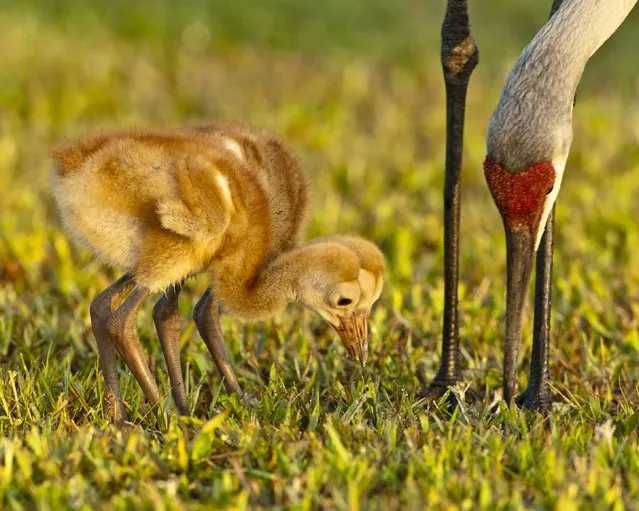
“Training Day”. It's training day for these two eleven day old Sandhill Colts. Mom was showing them how to dig for insects. A great experience. Location: Melbourne Florida USA. (Photo and caption by Graham McGeorge/National Geographic Traveler Photo Contest)
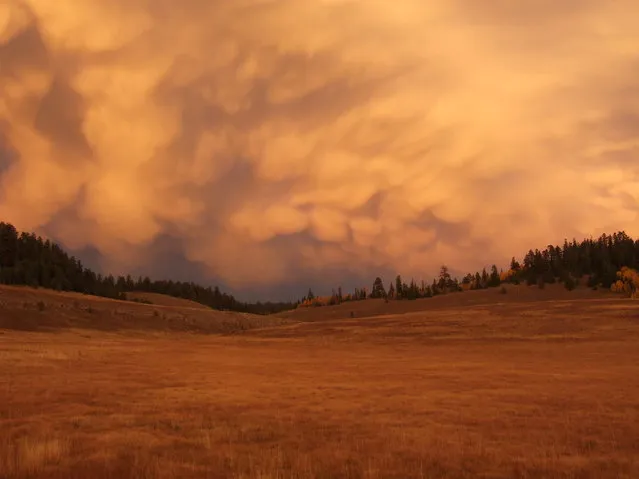
“After the storm”. This scene after a thunder and lightning storm on the way to the Grand Canyon was even more spectacular in our eyes than the Canyon itself that day. I did not change the colours of the image, this was how nature presented itself to us. Location: Near the Grand Canyon, on the way to the North Rim, United States. (Photo and caption by Monika Pongratz/National Geographic Traveler Photo Contest)
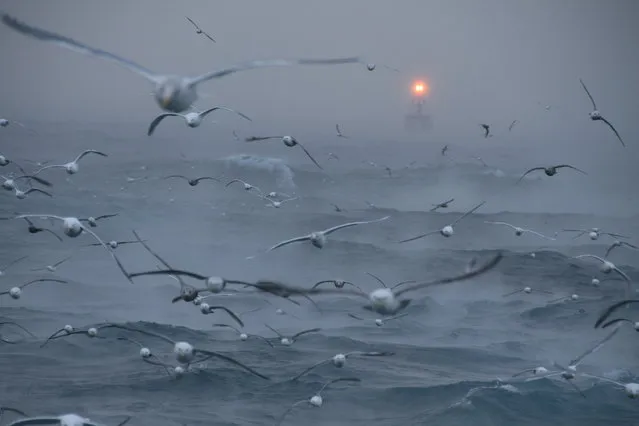
“Ship in the Distance”. A ship approaches in the Bering Sea. They are coming to unload their catch of pollock to the mothership. The cold air steams in the even colder air. Seagulls and Northern Fulmars follow behind the ships while they process the fish. Location: Bering Sea, Alaska. (Photo and caption by Jennifer Padilla/National Geographic Traveler Photo Contest)
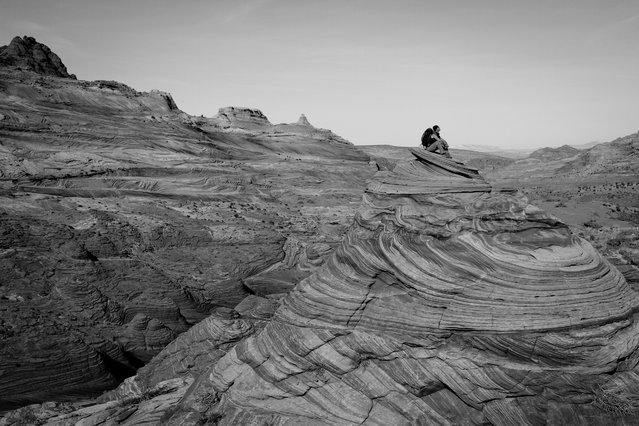
“Great place to contemplate”. While hiking, my boyfriend and I found the best place to just sit and take in the beauty of our surroundings. Location: Coyote Buttes, Arizona, United States. (Photo and caption by Samantha Schwann/National Geographic Traveler Photo Contest)
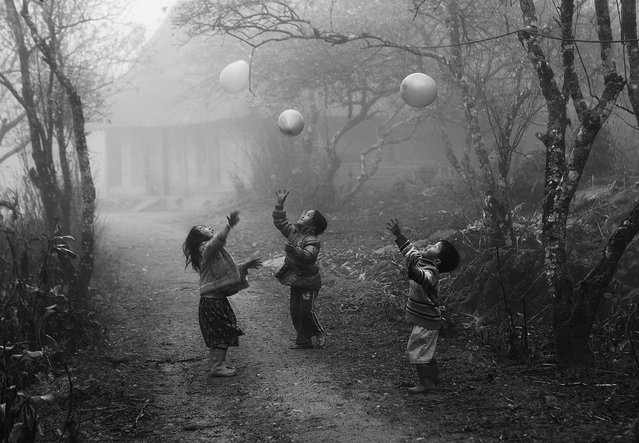
“Second Place Winner: My Balloon”. H'mong children play with their balloons on a foggy day in Moc Chau, Son La province, Vietnam; photographed January 2012. National Geographic contributing photographer Alexandra Avakian, one of this year's judges, shares her thoughts on the second place winner: This picture is like a dream, and it’s timeless not only because it’s black and white and there’s no sense of modernity, but also because it depicts an activity that children everywhere on the planet do with balloons. The fog and soft background make it feel like a memory. It’s every bit as good as the photographs in the seminal black-and-white photo book, “The Family of Man”. Sometimes the best scenes to shoot are not in the obvious places for travelers but can be found anywhere from a far-flung location – such as this remote Hmong village – to just the around the corner from a big event. (Photo and caption by Vo Anh Kiet/National Geographic Traveler Photo Contest)

“The Flirt”. Caught these two flirting grape vines in Napa Valley California one early misty morning. One vine with it's “finger” curled up like a seductress saying, come over to my row. The other vine reaches out to comply. Location: Napa, California, USA. (Photo and caption by Brian Yen/National Geographic Traveler Photo Contest)
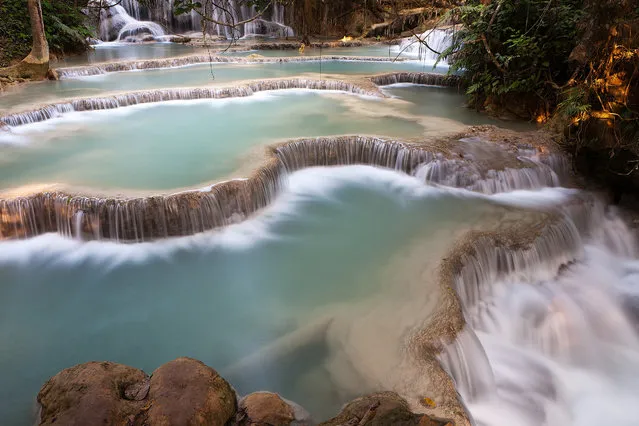
“The perfect Waterfall”. Huang Xi – thats how this waterfall is callled. It`s 50 km away from Luang Prabang, Laos. I arrived early in the morning long before the first tourist set a foot into the crystal clear water. So many cascades where the water runs above. But you have to pick the right time in the year. Summertime when the waterlevel is low it`s a good time. A saw a lot of different waterfalls but this one was one of the best. (Photo and caption by Thomas Hagenau/National Geographic Traveler Photo Contest)
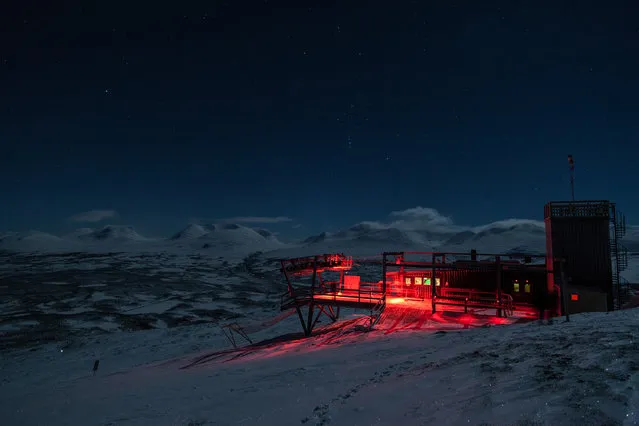
“Arctic Night”. 200 km above the arctic circle the Aurora Sky Station poses against the backdrop of a magical night landscape illuminated by the moon. I spent a freezing January night outside at –25° C (–13° F) shooting northern lights, when this scene caught my eye. Location: Abisko, Sweden. (Photo and caption by Marcus Haid/National Geographic Traveler Photo Contest)
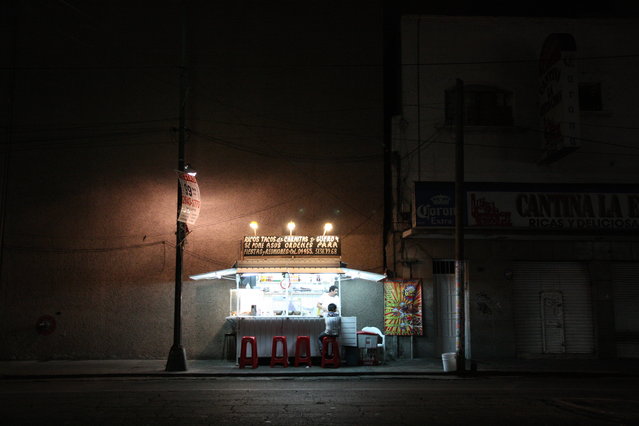
“Lone Taco”. After checking out a luche libre fight in Mexico City, what else to do but eat some classic, delicious tacos. Mexican street stands, best food in the world. (Photo and caption by Amy Croucher/National Geographic Traveler Photo Contest)
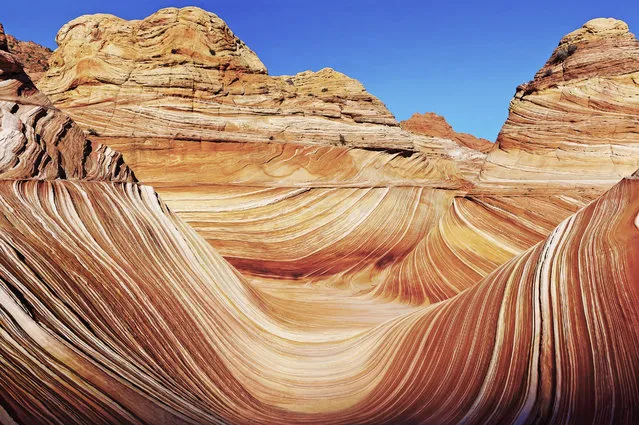
“The Wave”. I was one of the lucky few that have seen this amazing rock formation, only 20 permits are issued a day and there is an actual lottery to win the permit, 10 are issued online and 10 are issued at the Paria Canyon rangers station. This rock formation is Navajo Sandstone which has been created by the natural elements over eons. It is one of the most beautiful things that I have ever seen and I felt privileged that I had the chance to do so. Location: North Coyote Buttes, Arizona, USA. (Photo and caption by Miriam Perritt/National Geographic Traveler Photo Contest)
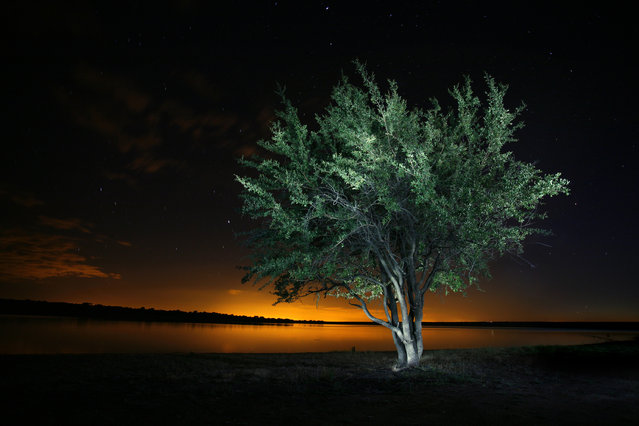
“Glowing Tree”. On a fishing trip in Mpumalanga, South Africa I took this photo of this tree next to Klipvoor Dam. The golden light in the background was cast by a nearby settlement's lights. I lit the tree up with a torch painting it over a period of a minute and a half. (Photo and caption by Erlo Brown/National Geographic Traveler Photo Contest)
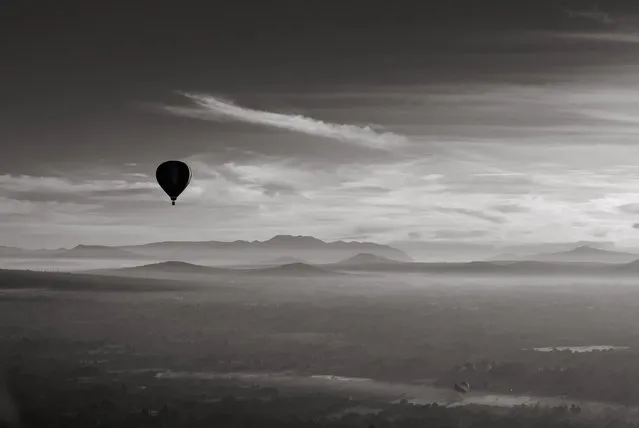
“Aerostatic globe”. Aerostatic globe over Teotihuacan, Mexico. (Photo and caption by Guillermo Keller/National Geographic Traveler Photo Contest)
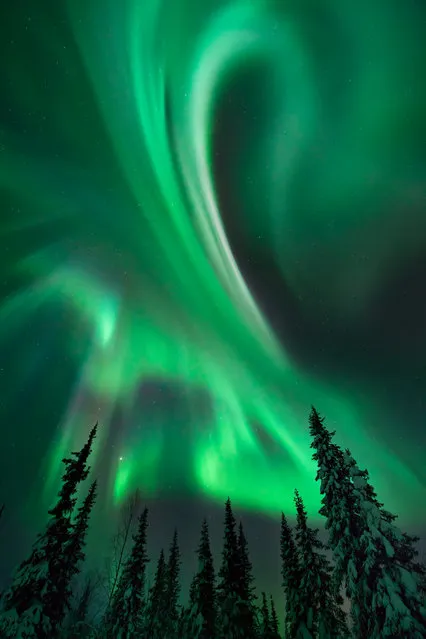
“My Psychedelic Garden”. Taken in Sweden on a night of spectacular aurora during February this year. Although I have now seen aurora on may occasions, getting particularly photogenic shapes in context with the environment is a very difficult thing to do. With massive activity building, these huge loops began to appear overhead, before stretching out across the sky. (P.S. I have this as a larger image if required). Location: Sweden, Kiruna. (Photo and caption by David Clapp/National Geographic Traveler Photo Contest)
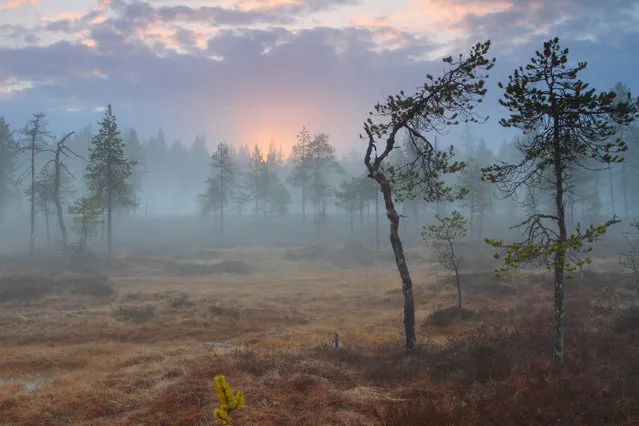
“Beginning of the summer”. A magic moment in the midnight in northern Finland in late may 2012, taken on a swamp towards the midnight sun and nighthaze. Location: Finland, North-eastern, Pudasjarvi. (Photo and caption by Jari-Matti Salonurmi/National Geographic Traveler Photo Contest)
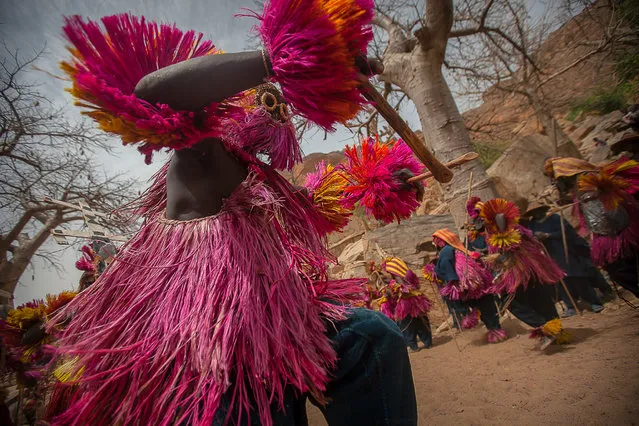
“Dance”. Dance in the village of Tireli Dogon, the Dogon country, Sahel, Mali. (Photo and caption by Anthony Pappone/National Geographic Traveler Photo Contest)
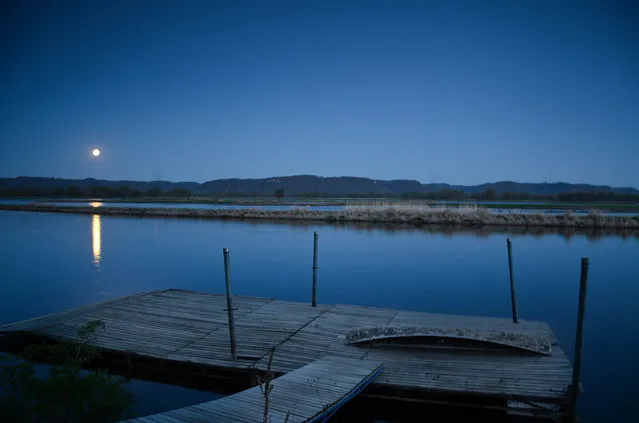
“Setting Moon on the Mississippi River”. A beautiful, early spring morning in Wisconsin. The moon was setting as dawn arrived. Location: La Crosse Wisconsin. (Photo and caption by David Morrison/National Geographic Traveler Photo Contest)
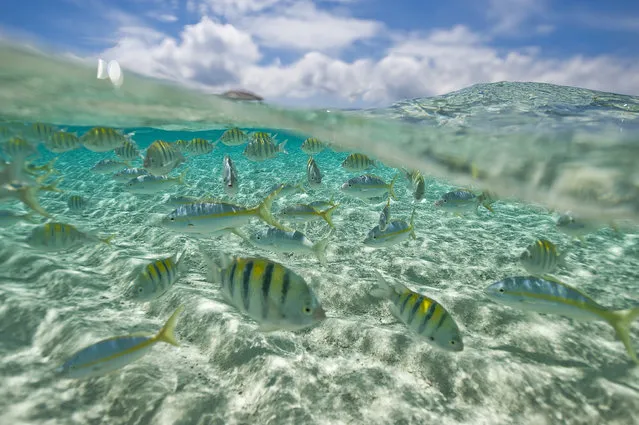
“Cayo Arena”. Cayo Arena is a beautiful sandbar 10 kilometers into the middle of the Atlantic off the coast of Punta Rucia. It’s often called Paradise Island by tour guides, and it is easy to understand why. Ultra-white sand gently slopes into the mind-bendingly clear turquoise water, where snorkeling is good due to coral reefs making a home for schools of fish that could quite possibly eat out of your hand. It is difficult to say how big the “island” is because it shrinks and expands depending on the season and the ocean’s currents. Location: Cayo Arena Punta Rucia Luperon Dominican Republic. (Photo and caption by David Pou/National Geographic Traveler Photo Contest)
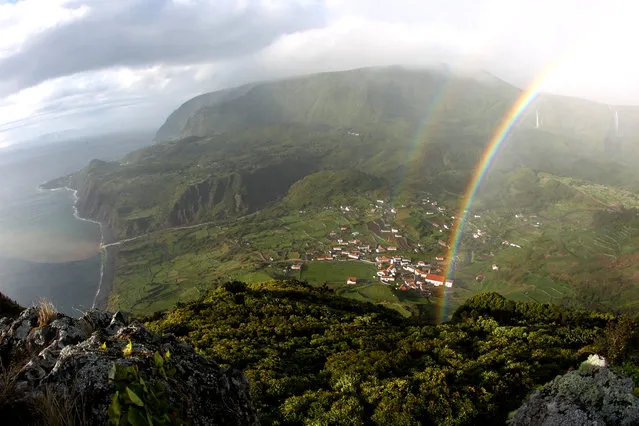
“Flower Island of the Azores”. Traveling from Bermuda to Europe, the first grass, trees and cows sailors see after days of just Atlantic Ocean is the island of Flores. Overlooking the small town Fajãzinha, on the right one of at least 20 waterfalls of Ribeira Grande that flow into see here. On the horizon Fajã Grande, Europe's westernmost village. 4000 inhabitants life very remote, visited by a few tourist per year only. Flores and the smaller Corvo are part of the North American tectonic plate, unlike all other Azorean islands which sit on the European plate. Flores on UNESCO's list of World Network of Biosphere Reserves. Location: Fajãzinha, Flores, Azores, Portugal. (Photo and caption by Sybrand Treffers/National Geographic Traveler Photo Contest)
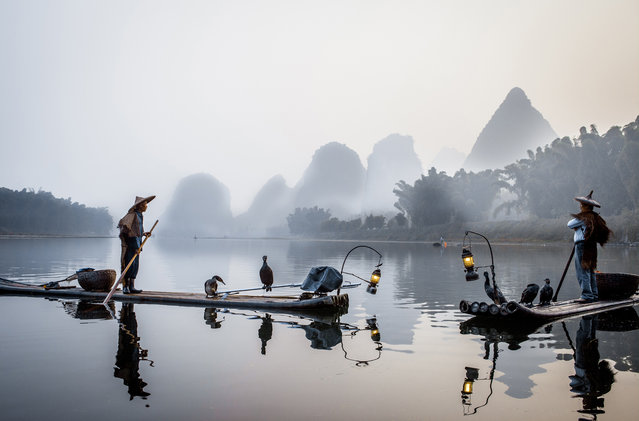
“Fishermans in the fog”. Cormorans fisherman on the Li river, Yangshuo – China. (Photo and caption by Philippe Cap/National Geographic Traveler Photo Contest)
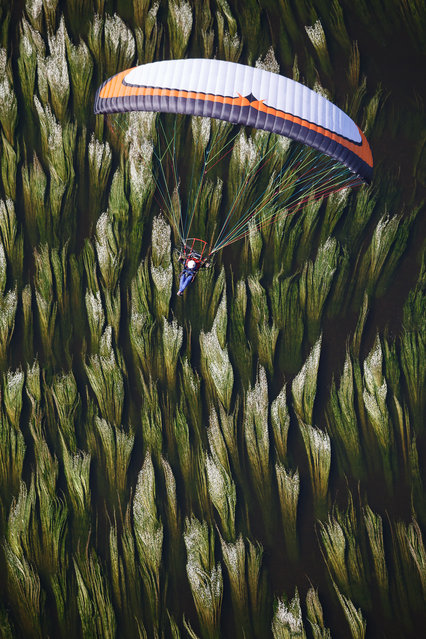
“Powered paragliding above a river”. The aquatic plants provide an unusual background as the pilot flies over the Dordogne River. Location: Meyronne, Dordogne River, Lot (46), France. (Photo and caption by Franck Simonnet/National Geographic Traveler Photo Contest)
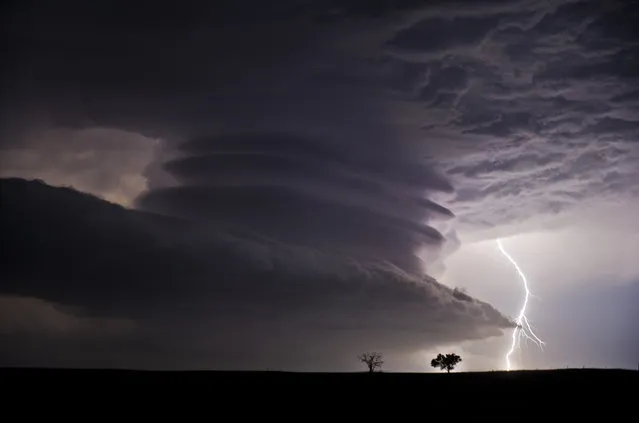
“Stacked Supercell with Lightning”. This huge mesocyclone supercell was near the Nebraska / Kansas border on the night of June 22nd, 2012. What a stunning structure! (Photo and caption by Jennifer Brindley/National Geographic Traveler Photo Contest)
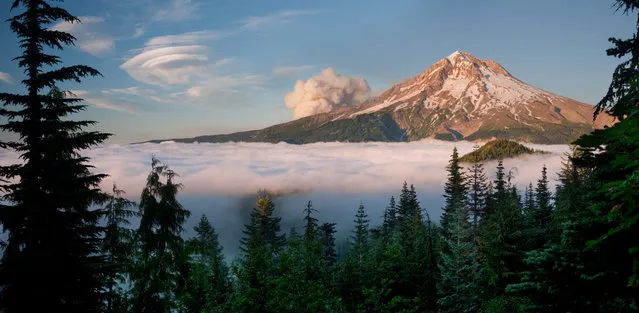
“Mt Hood (Oregon) with Smoke of Dollar Lake Fire”. Smoke from the Dollar Lake fire rises in the distance, behind the Barrett Spur of Mt Hood, as the sun sets and fog drifts into the valleys that flank the mountain. Taken from the summit trail on Zigzag mountain, August 29, 2011. Location: Eight miles WSW of Timberline Lodge, Mt Hood, OR. (Photo and caption by Mark Schmidt/National Geographic Traveler Photo Contest)
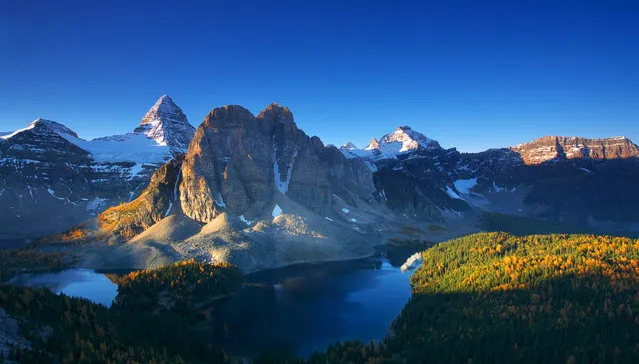
“Mt Assiniboine on an Autumn Morning”. Mount Assiniboine & Sunburst Peak on a beautiful autumn morning. Location: British Columbia, Canada. (Photo and caption by Henry Liu/National Geographic Traveler Photo Contest)
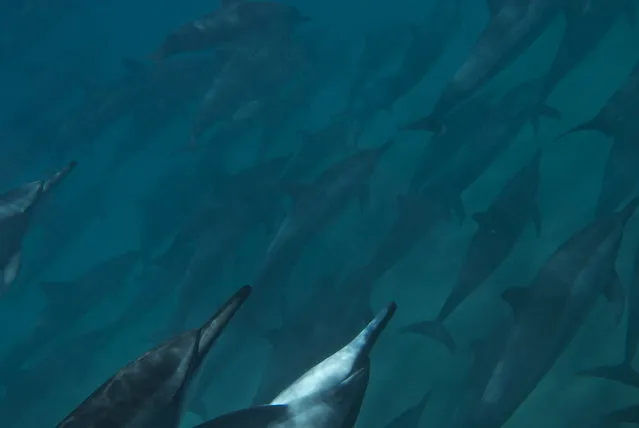
“Peek-a-boo”. The Waianae coast of Oahu is a visiting area for many Cetaceans, but the Hawaiian Spinner dolphins are the most common marine mammal seen off this coast. One beautiful day we found ourselves amongst one of the largest pods of Hawaiian Spinner dolphins we had ever swam with. They swam with us and around us, all together the encounter lasted an hour. However, it seemed to all happen so quickly, this is the only photo of this magical moment we managed to take. (Photo and caption by Kimberly James/National Geographic Traveler Photo Contest)
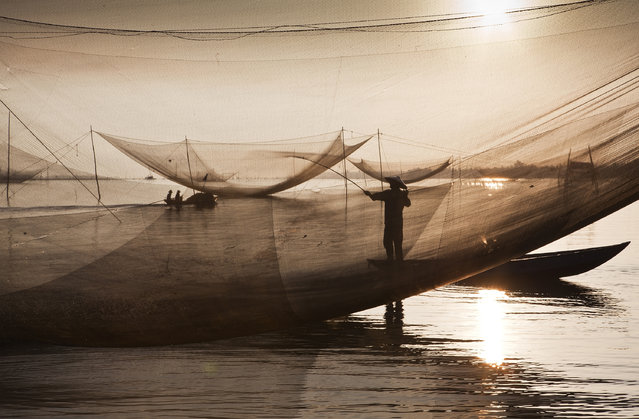
“Waterworlds”. Fishermen‘s work in the early hours across Vietnam. The work often starts in the night and lasts untill the next morning. Over several weeks I attended a few fishermen to observe their daily work and procedure of catching fish. Location: Hoi An, Vietnam. (Photo and caption by Kostas Maros/National Geographic Traveler Photo Contest)
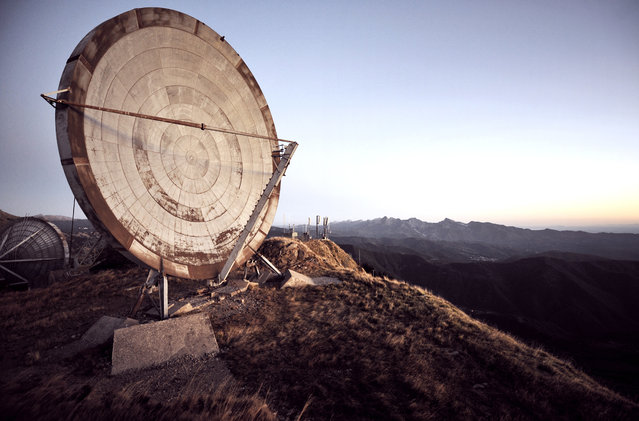
“Ice Station Zebra”. Two giant dishes sit abandoned overlooking the vast Italian mountain tops. It was once part of the ACE High project, a NATO communications system which dates back to 1956. The system was decommissioned in the late 1980s. (Photo and caption by Reginald Van de Velde/National Geographic Traveler Photo Contest)
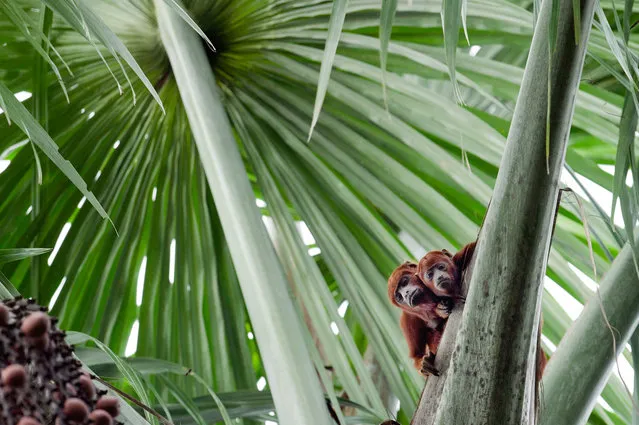
“Red Howler Monkeys in Tree”. During a heavy rain storm on the Napo River deep in Yasuni National Park, Ecuador, I took cover in my canoe under a palm tree and discovered I had company. A red howler monkey mother and baby were also taking shelter from the rain and we waited out the storm together watching each other the entire time. They were just as interested in my camera as I was in them. (Photo and caption by Rebecca Yale/National Geographic Traveler Photo Contest)
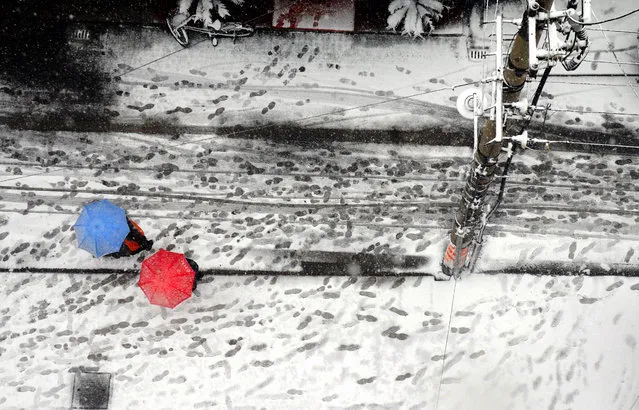
“Meet”. People are hurrying to and fro. In the world, we are very happy to meet. Location: China, Suzhou. (Photo and caption by Bornien Chen/National Geographic Traveler Photo Contest)
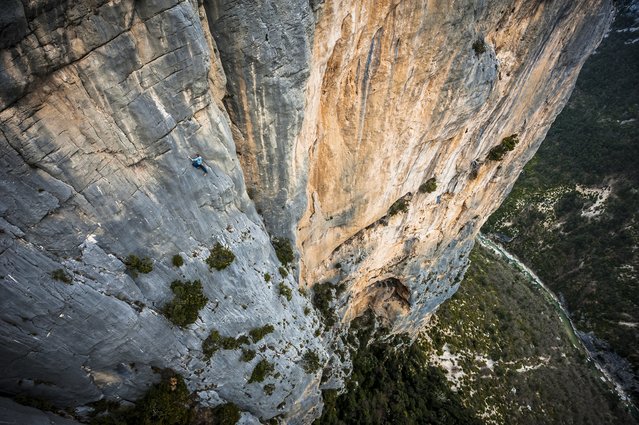
“Freesolo”. Austrian athlete Mich Kemeter climbs the 300m high Verdon cliffs without a rope or any safety equipment, here on the last pitch of the Durandal route (F6a/5.10a). Location: Verdon Gorges, France. (Photo and caption by Alexandre Buisse/National Geographic Traveler Photo Contest)
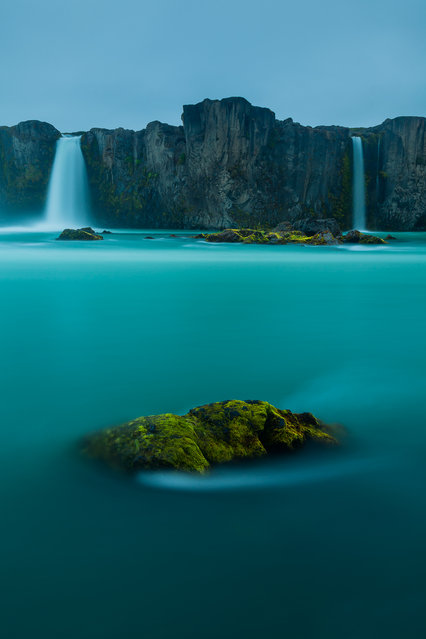
“Waterfall of Gods”. I wanted to synthesize all the power of the waterfall of the gods in a soft and to transmit all the calmness with which I would have liked to see the scene. Illumination light from the midnight sun at 01:00 am. Location: Godafoss, north Iceland. (Photo and caption by Pere Soler Isern/National Geographic Traveler Photo Contest)
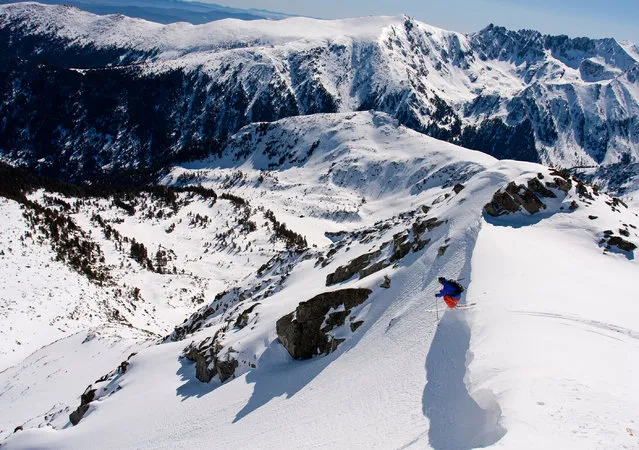
“Extreme skiing”. Back country skier dropping off a cornice in a winter day. Location: Pirin mountains, Bulgaria. (Photo and caption by Victor Troyanov/National Geographic Traveler Photo Contest)
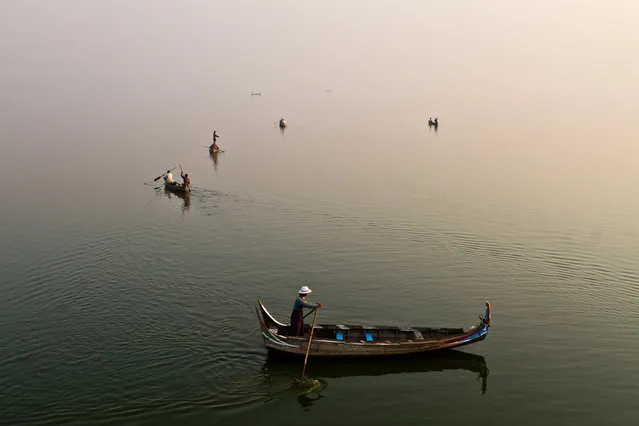
“Fishing in the sky”. Every morning at Dawn, thousands of fishing boats cross the Taungthaman lake, in the surroundings of Mandalay, Myanmar. At this time of the day, It is nearly impossible to distinguish the surface of the lake from the sky. (Photo and caption by Sophie Revillard/National Geographic Traveler Photo Contest)
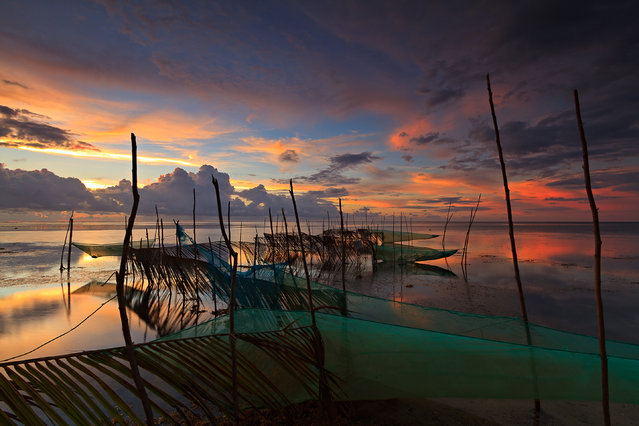
“Dusk at Patar Beach”. Fishnets strung out from the beach towards the sea at the village of Patar in Bolinao town, Pangasinan. Location: Bolinao, Pangasinan, Philippines. (Photo and caption by Hilario Marbella/National Geographic Traveler Photo Contest)
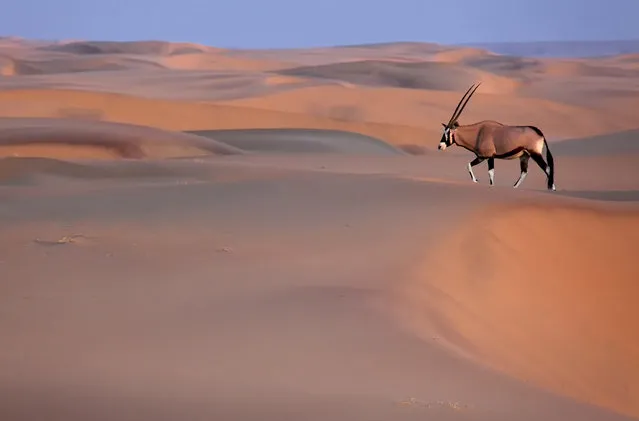
“Oryx gazella”. Above all other antelopes the Oryx (Oryx gazella) embodies the spirit of the Namibian desert.. He is the thoroughbred of the desert, built with incredible strength and endurance..!But the most impresive is the beauty of his passage among the sand dunes. That morning i experienced one of the most spectacular sights of the planet.In the middle of Namibian desert i saw with my telephoto the Oryx be struggled with the sand in order to drink water from the Kunene river.My aim was the wildlife with the eerie landscape. Location: Serra cafema – Kaokoland, Kunene river, north Namibia. (Photo and caption by Panagiotis Laskarakis/National Geographic Traveler Photo Contest)
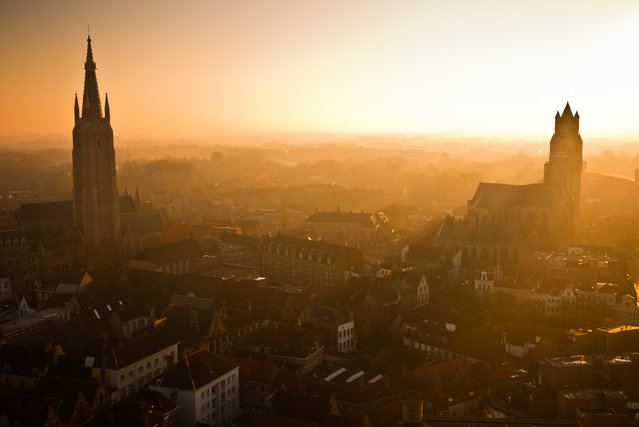
“Sunset over Bruges”. The Belgian city of Bruges is famous for its stunning medieval architecture. Taken at sunset on top of the Belfort, the city's gothic cathedral spires (the Church of Our Lady on the left, and St. Salvator's Cathedral on the right) and angular roofs are bathed by the warm glow of an ethereal, golden light. (Photo and caption by Calvin Lee/National Geographic Traveler Photo Contest)
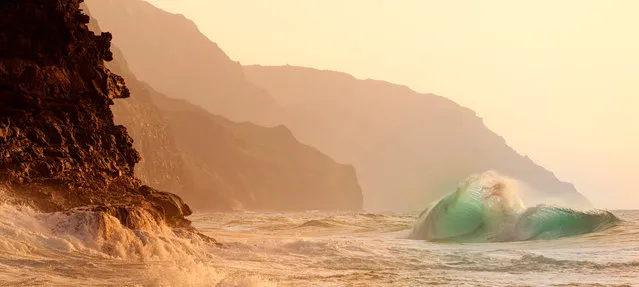
“Dragon Wave”. This photo was taken from the rocks at Ke'e beach. The wave formed into the shape of a dragon. Location: Ke'e Beach, Kauai, HI. (Photo and caption by Lace Andersen/National Geographic Traveler Photo Contest)
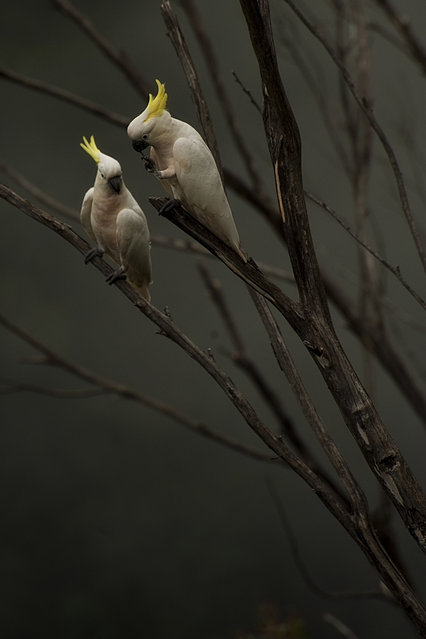
“Sulphur Crested Cockatoos on a misty morning”. Two Sulphur Crested Cockatoos enjoying chewing on wet twigs on a misty morning in the Blue Mountains, New South Wales, Australia. (Photo and caption by Jackie Curtis/National Geographic Traveler Photo Contest)
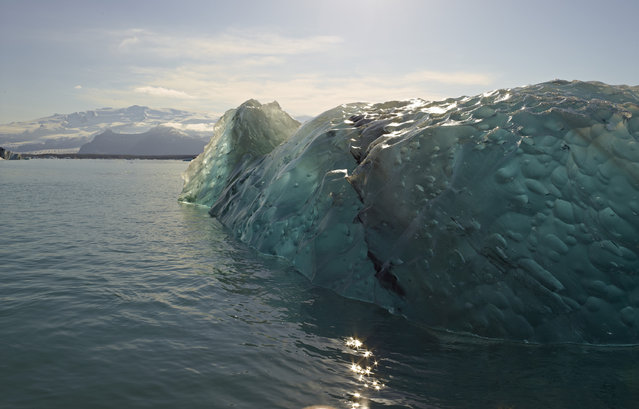
“Flipped Iceberg”. I was riding a zodiac through Jökulsárlón Glacier Lagoon and found this recently flipped iceberg – I loved seeing the frozen bubbles and the glassy appearance. Location: Jökulsárlón Glacier Lagoon, Iceland. (Photo and caption by Christine Baum/National Geographic Traveler Photo Contest)
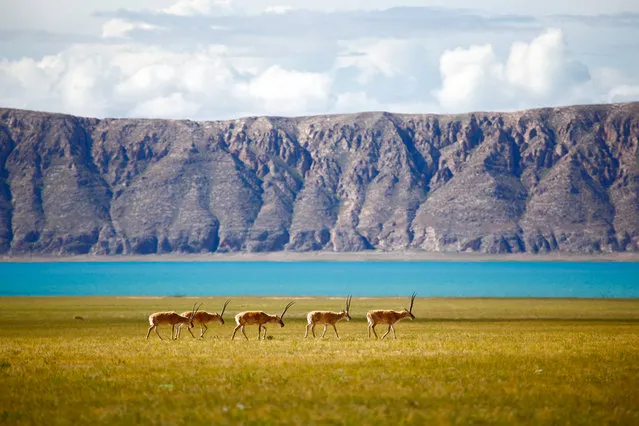
“Tibetan antelope”. A group of Tibetan antelopes were travelling along a huge lake. (Photo and caption by Yunke Li/National Geographic Traveler Photo Contest)
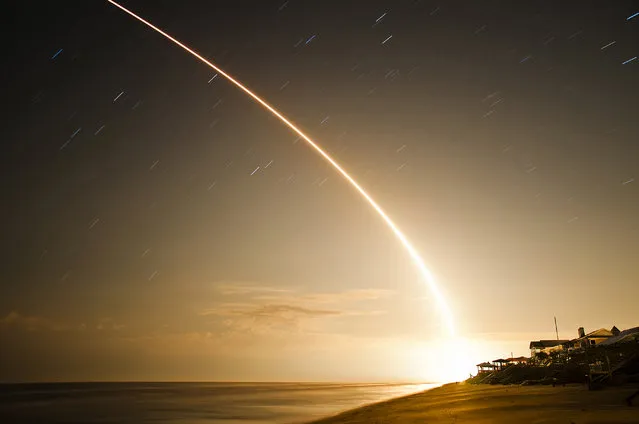
“From Earth with love...” I took this one from New Smyrna Beach, FL on May 22, 2012 at 3:44am. It was the historic launch of the first private rocket into space. The SpaceX Falcon 9 with Dragon cargo capsule were launched from Cabo Cañaveral, FL to the International Space Station. (Photo and caption by Dolores Gomez/National Geographic Traveler Photo Contest)
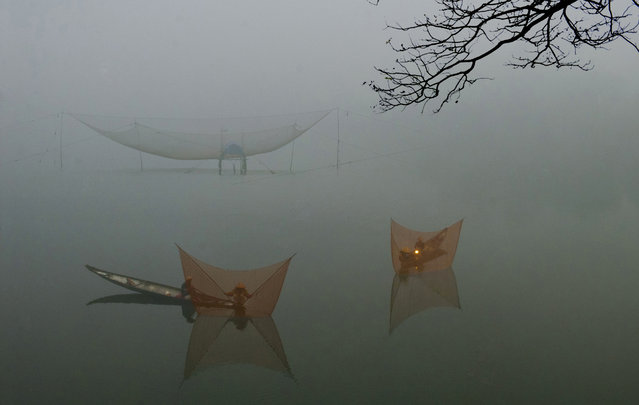
“Fish net”. Some fishermen set up net on a river early morning. It’s about 6:am, this time is end of winter. Location: Hue city, VN. (Photo and caption by Huong Mai/National Geographic Traveler Photo Contest)
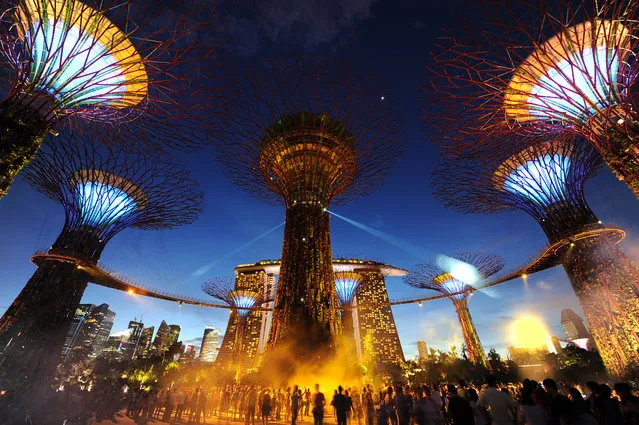
“The nation amidst the Supertrees”. A spectacular night view of the Supertrees. Location: Gardens by the Bay, Singapore. (Photo and caption by Jian Wei Poon/National Geographic Traveler Photo Contest)
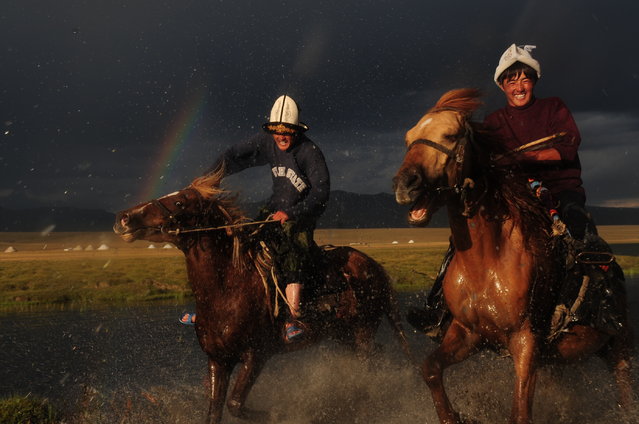
“Galloping Horses”. Galloping horses under the rainbow in song kol lake in kirghystan on a rainy day. Location: Kirghystan, Song Kol Lake, June 2011. (Photo and caption by Deniz Bensason/National Geographic Traveler Photo Contest)
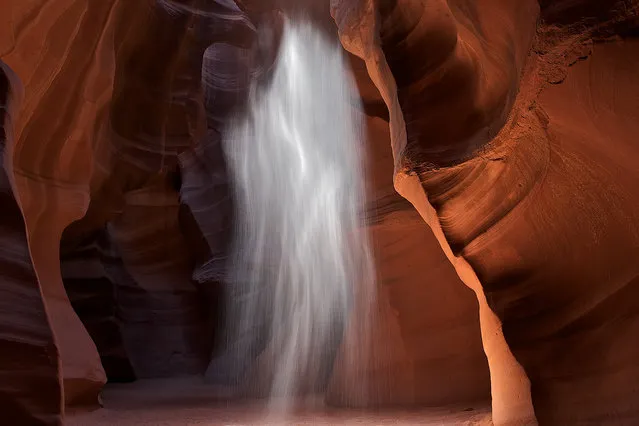
“Sand Spirit”. My son, Skye, named this image because he said that it looked like ghost floating in the air. I agreed with him, and thought it slightly ironic because the Navajo people who have permits to guide this canyon had closed it for the entire day. They closed Upper Antelope Canyon to bless it, and give back to the ancestors. Vern, our guide, informed us that they take from the canyon by profiting from the tour guides, and that sometimes they just need to give back to the spirits in the canyon. For some reason the wind was howling through the canyon the day after the blessing, and I got this shot. (Photo and caption by Matt Walker/National Geographic Traveler Photo Contest)
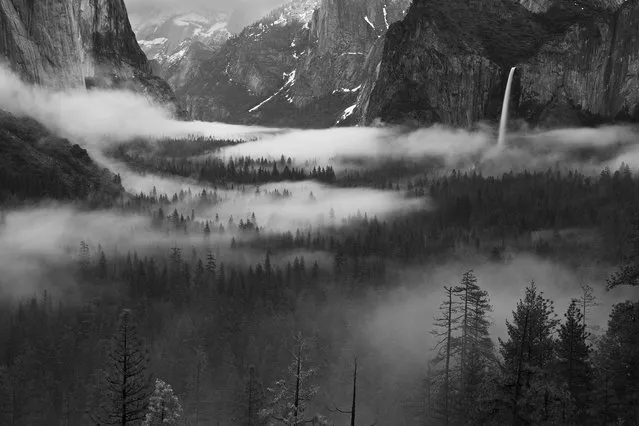
“Yosemite Valley”. It was an early morning in April of 2011. I went to the Tunnel View of the Yosemite National Park. Fog was floating in the Yosemite Valley, making it such a wonderful spectacle. Location: Yosemite Valley, California, USA. (Photo and caption by Hong Zeng/National Geographic Traveler Photo Contest)
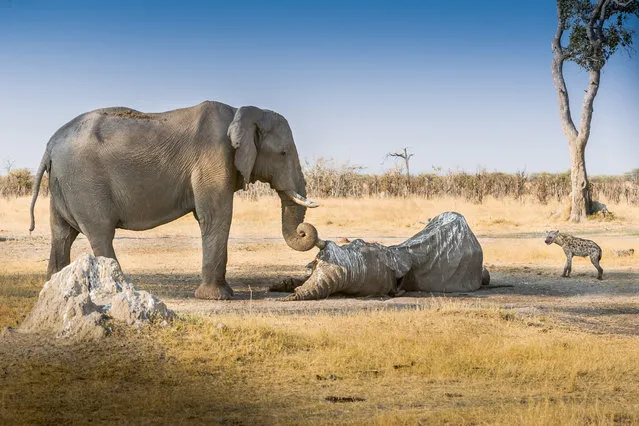
“Good Bye Old Friend”. Elephants are legendary for their memory and intelligence including attributes associated with grief, making music, altruism and compassion. We came across this elephant whose corpse was overcome by vultures and jackals. From a distance we heard and then saw another elephant approaching at a fast pace. She was successful at chasing away the predators and then very slowly and with much empathy wrapped her trunk around the deceased elephants tusk. She stayed in this position for several hours guarding her friend. Location: Botswana, 2007. (Photo and caption by John Chaney/National Geographic Traveler Photo Contest)
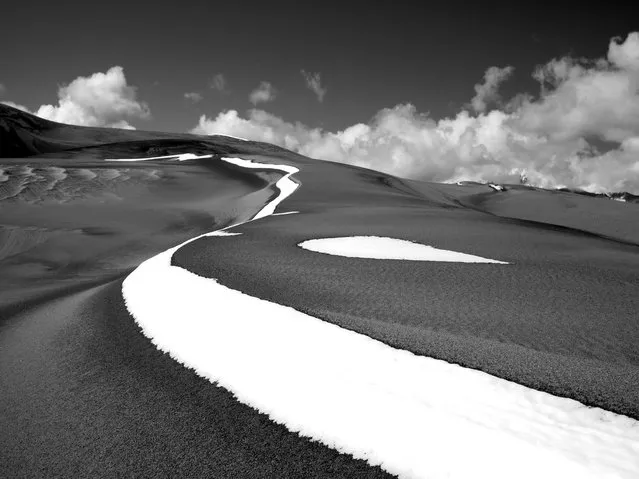
“Sno Caps”. Remains of overnight spring snow. Each dune ridge had a white cap and an accompanying moisture pattern (dark) in the sand. Could't take a bad picture! Location: Great Sand Dunes National Park, CO. (Photo and caption by Todd Riecks/National Geographic Traveler Photo Contest)
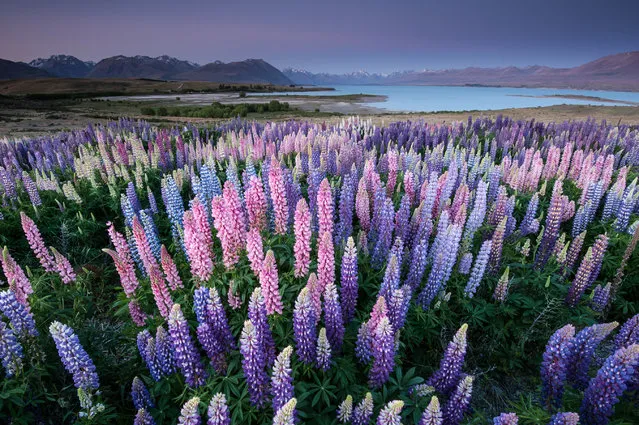
“Lupins, Lake Tekapo, New Zealand”. Each December, lupins put on a stunning display around Lake Tekapo, New Zealand. (Photo and caption by Mike Hollman/National Geographic Traveler Photo Contest)
25 Jun 2013 13:12:00,
post received
0 comments
